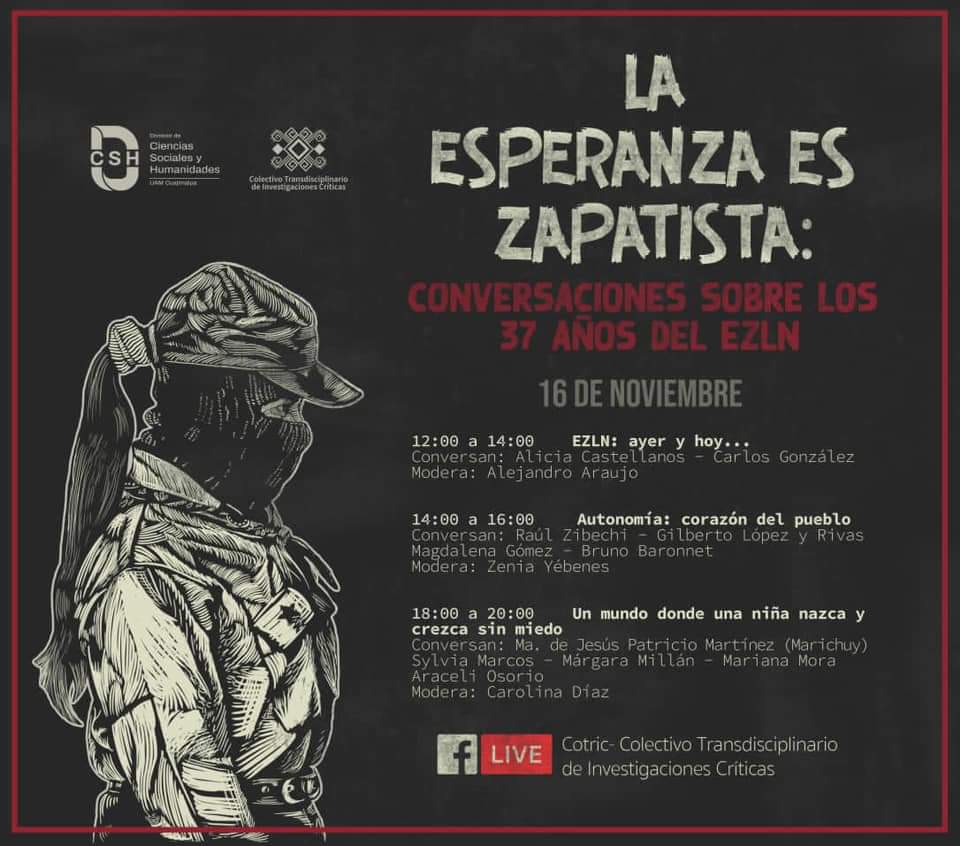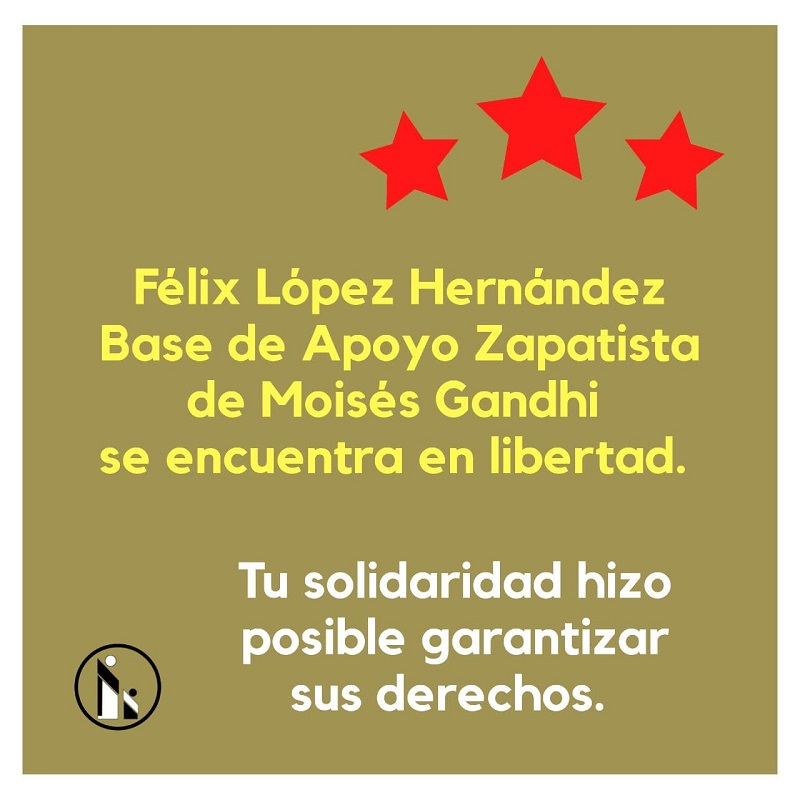Sorry, this entry is only available in Español. For the sake of viewer convenience, the content is shown below in the alternative language. You may click the link to switch the active language.
Al pueblo Otomi en resistencia desde el INPI
Al pueblo de México
A los pueblos del mundo
Desde el Congreso Nacional Indígena/Concejo Indígena de Gobierno, enviamos un saludo fraterno a la Comunidad Otomi Residente en la Ciudad de México, que ocupa las oficinas del que se hace llamar Instituto Nacional de los Pueblos Indígenas (INPI) en exigencia de que sean atendidas sus justas demandas, buscando el diálogo y fijando una fecha para hacerlo, el 3 de noviembre próximo, e invitamos a las organizaciones y comunidades indígenas de la Ciudad de México y del país a acompañar y fortalecer su lucha en esa fecha y de manera permanente.
Como Coordinación del CNI-CIG nos sumamos a su exigencia porque sabemos que en su lucha, mientras el arma ha sido siempre la palabra, los gobiernos han respondido con agresiones, desalojos y criminalización. Nos sumamos a sus tiempos, porque mientras arriba los toman como un plazo, abajo ese diálogo ha tardado muchos años, en los que los pueblos originarios que en colectivo construyen organización desde las ciudades, no son escuchados ni vistos.
Saludamos la organización de los pueblos originarios radicados en la Ciudad de México, que, luchando, están haciendo territorios donde puedan vivir con dignidad y derechos, materializados en sus exigencias de vivienda, trabajo y justicia. Mismas que hacemos nuestras, porque en todas las geografías, somos criminalizados por mostrar lo que somos, por vivir en la ciudad y por vender nuestro arte; porque para el gobierno sobramos, estorbamos y por lo tanto mandan a sus represores a sacarnos, a golpearnos para quitarnos nuestras mercancías, a destruir nuestro trabajo, a encarcelarnos. Entonces, resulta que nuestros derechos humanos son los que no importan, los que, si acaso registra la comisión de derechos humanos, es por rutina y con una carga de desprecio.
Abajo, los representantes del pueblo Otomí, que florece en comunidades en tres predios de la ciudad de México, resisten el desalojo violento, con el que los gobiernos garantizan que el dinero de las empresas inmobiliarias sea el que manda y reordena la ciudad al servicio del gran capital; siembran el desprecio, contratan golpeadores para desalojar y violentar a hombres, mujeres, niños y ancianos. Mientras, en nuestras comunidades, hacen grupos de choque, guardias blancas, grupos paramilitares, sembrando el desprecio, consolidando el despojo y la represión.
Por eso somos uno en la exigencia que nuestros hermanos y hermanas, desde el INPI, hacen a los gobiernos y llevan con fuerza a todo el mundo, de que dejen de formar, alentar, armar y proteger a esos grupos en el estado de Chiapas donde arrecia la guerra contra nuestros hermanos y hermanas del EZLN, así como a lo largo y ancho del país.
En ese sentido, denunciamos la campaña de discordia y linchamiento que, al viejo estilo priísta, los cabecillas del INPI y sus clientelas han estado realizando, llegando a nuestros pueblos, comunidades, barrios y organizaciones indígenas, para solicitar que se hagan documentos en los que nos opongamos a la movilización de nuestras y nuestros compañeros que resisten en el INPI. Lo suyo, del gobierno, es el desprecio, la división y la confrontación.
Se refieren para chantajear, a los “apoyos o programas” que maneja el INPI, como si así de fácil se resumieran décadas, siglos de abandono, desprecio, despojo, explotación y represión contra nuestros pueblos. Hacemos un respetuoso llamado a todos los pueblos de México, a no caer en esa campaña de mentiras. Pues el odio de los mandones, de los capataces, será contra cualquiera que reclame, luche y ejerza sus derechos.
O sea, hermanas y hermanos de la Comunidad Otomi Residente en la Ciudad de México, su lucha es nuestra porque somos pueblos que en colectivo, en el campo y en las ciudades, abrimos con resistencia y rebeldía los caminos que arriba nos cierran y nos niegan.
Llamamos a los pueblos originarios, a los colectivos y organizaciones conscientes, a los medios de comunicación alternativos, a estar atentos y solidarios con nuestras hermanas y hermanos del pueblo Otomi en la Ciudad de México, así como a las acciones y respuestas que pretendan los gobiernos.
Atentamente
Octubre de 2020
Nunca Más un México Sin Nosotros
Coordinación del Congreso Nacional Indígena/
Concejo Indígena de Gobierno
Fotografía: Rafael Lozano







